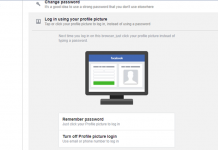Right after releasing iPhone 6 and iPhone 6 Plus, Apple started rolling iOS 8. The update was received by most of the Apple devices within a few hours, since it was the very first iteration of the iOS 8, the OS contained a number of bugs and performance issues that were supposed to be treated by Apple in another minor update.
A few hours ago, Apple rolled out iOS 8.0.1 that apparently fixed the bugs and all the performance issues in iOS 8 but as soon as the users received this latest update, they realized that iOS 8.0.1 wasn’t less then a nightmare. The very first thing that came under the notice of users was, this update started killing the cell service, and changed the status to no service. Turning off the flightmode and then turning it on back again didn’t help, nothing else seemed to be working in this regard. Alongside that, this update also killed the functionality of touch ID, that resulted in causing problems while unlocking iPhone 5S and other devices having the Touch ID sensor. It has already been verified that these bugs were a part of this update, these weren’t caught on some particular devices.
Apple has already taken a note of this update and pulled it back from the developer’s portal and iTunes. The latest software available right at the moment is iOS 8 and most likely, Apple won’t release any further update as long as it doesn’t come up with a fix for the existing issues. Just in case, being hasty, you’ve updated your device to iOS 8.0.1 and you’ve become a victim of this buggy update, you would definitely want to revert back to the previously working state of your iOS device as soon as possible. Now that you’ve spotted this place, you may find the method below and take your device back to iOS 8 within a few minutes.
How To Downgrade From iOS 8.0.1 To iOS 8:
- Download and install iTunes 11.4.
- Once downloaded and installed , open iTunes 11.4 on your MAC or PC now.
- Connect your Apple device to your PC now.
- Once connected and detected in iTunes, click on “Restore iPhone/iPad/iPod”.
- Since the latest version available is iOS 8, it will start installing the firmware right away.
- Once installed, unplug your device and enjoy iOS 8 running greatly on your device!
That’s all!














